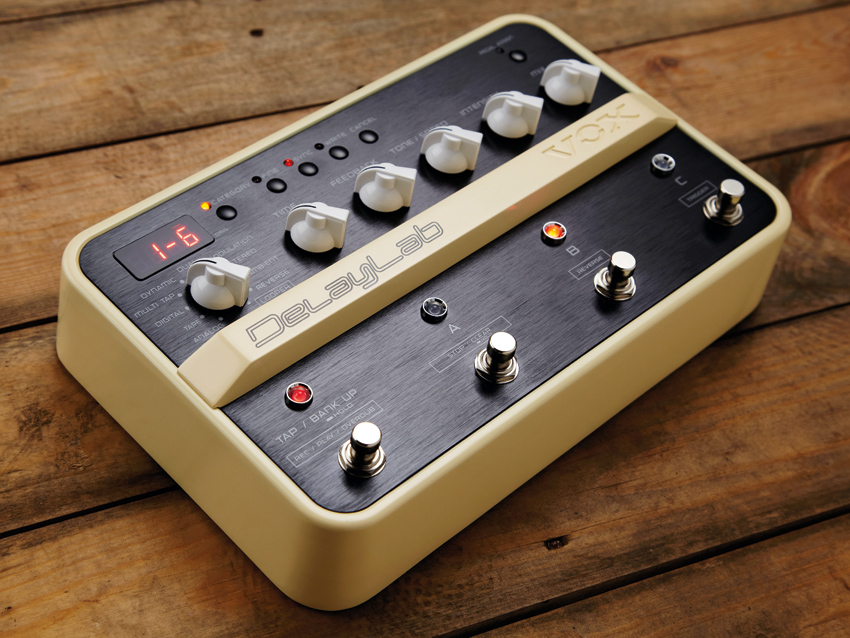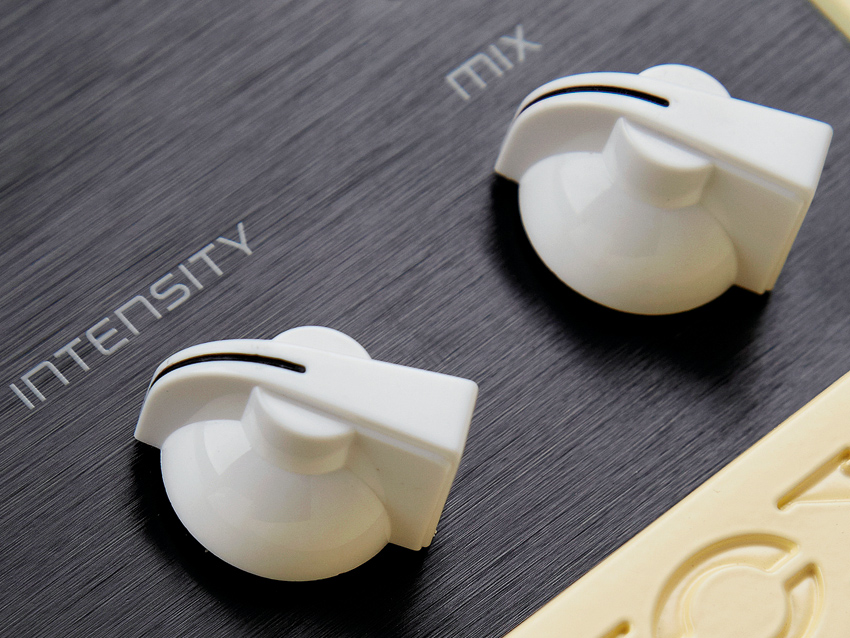MusicRadar Verdict
If you want easy onstage access to a range of different delay times and types, the DelayLab sets a new practical standard: superb.
Pros
- +
Easily to program; three delays always available; wide range of delays; looping function; exact millisecond setting, famous song presets.
Cons
- -
Nothing.
MusicRadar's got your back

Vox DelayLab

Vox DelayLab
Whether used sparingly to add some space and depth to a solo or, as The Edge does, where the expertly timed rhythmic repeats carry as much weight as the played notes, a delay pedal has become a de rigueur addition to many guitar player's rigs.
While some players might simply use a delay pedal on one setting all night, there will be others who like to change the delay time from song to song and/or have completely different delay sounds available. Up until now, for those players, there's been the option of having a number of different delay pedals on the board, or using a Line 6 DL-4 with three delays instantly available.
"Delay times can be zeroed in to the exact millisecond: alternatively, you can set delay time by tap tempo either for straight time or for a range of polyrhythmic effects"
Vox, however, has just raised the stakes with the DelayLab, which not only gives you instant access to three different delays at any one time but also arranges these into 10 easily changed banks of three so you could, for instance, have three completely different delay types/times available for each song in a 10-song set. It also houses a stereo looper function that can capture up to 28 seconds of your playing.
In use
Boasting four footswitches, the DelayLab is by necessity a chunky pedal, taking up more pedalboard space than three connected BOSS compacts, and is very robustly constructed.
The first footswitch in the array operates tap tempo, but also scrolls up to the next bank when held for about three seconds. The other three footswitches select the patches within the bank, the number of the currently selected bank/patch being shown in the small display window.
To populate the patches, 10 delay types can be chosen from a rotary switch and there are three variations on each (designated as standard, vintage and custom), scrolled through with an adjacent button. A set of five knobs sets the parameters for the effect - moving a knob instantly places the numerical value of the selected parameter into the display.
Want all the hottest music and gear news, reviews, deals, features and more, direct to your inbox? Sign up here.
There is a comprehensive array of effects types from some vintage analogue tape and BBD emulations that do a practical approximation of the real thing. You get everything from standard digital delay to various multi-tap, dynamic and reverse delays and delays with distortion, pitch change or filtering on the repeats.
Overall, there's plenty for everyone, from unobtrusive delays that blend smoothly into your sound to effects that will really make their presence felt. This includes some really interesting variations on how the repeats are transformed and some spacey ambiences.
While it's easy enough to twiddle knobs on the fly, the most logical use for the DelayLab is to edit your desired delay times and types, then load them via the simple saving procedure into the 30 onboard memories ready to be called up when needed.
Delay times can be zeroed in to the exact millisecond: alternatively, you can set delay time by tap tempo either for straight time or for a range of polyrhythmic effects - a Sync Mode links a range of time signatures to the tapped tempo.
Switching between the patches is smooth and seamless, and, of course, if you need to adjust any of your carefully programmed delay times onstage to match a wayward drummer, the tap tempo switch is always available. More performance possibilities are available by connecting an expression pedal, which can be assigned to any parameter and saved with a patch, facilitating foot control of, perhaps, the volume of the repeats or the regeneration on analogue emulations.
The Looper offers a choice of three delay effects that can be applied to the sound if desired and it's very easy to operate with the four footswitches offering various related functions, including reversing the loop. It's great for practising and as a creative tool, and is a classy final addition to the DelayLab's already considerable attributes.
Having three different delays available has assured the Line 6 DL-4 a place on many guitarists' boards since it was released, and it's been a mystery why no one else has followed that format. Twelve years on the DelayLab takes that particular ball and runs with it, and in doing so appears highly likely to be gracing a good few stages from now on.
It's a well-specified and intuitive pedal with an extremely practical configuration for live use.
Trevor Curwen has played guitar for several decades – he's also mimed it on the UK's Top of the Pops. Much of his working life, though, has been spent behind the mixing desk, during which time he has built up a solid collection of the guitars, amps and pedals needed to cover just about any studio session. He writes pedal reviews for Guitarist and has contributed to Total Guitar, MusicRadar and Future Music among others.
